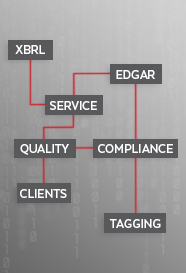The Facts on limited liability:
What is the limited liability provision as stated by the SEC Rule 406T by SEC?
In summary, the rules offer a 24-month grace period where the SEC considered your XBRL as “furnished” not “filed.” That meant that mistakes within your XBRL documents were viewed as errors in good faith, and carried no penalties if corrected promptly.
Example: A smaller reporting filer should have submitted its first interactive data (in a Form 10-Q) for the fiscal period ended June 30, 2011. This would have caused its limited liability to expire, for the filings of fiscal period ending June 30, 2013.
When the limited liability window closes, XBRL exhibits will have the same liability provisions as regular filings under the anti-fraud provisions of the Securities Law.
(Click here to view the rules)
What this means in plain-English:
After the expiration of limited liability, Rule 406T calls for a “good faith effort” by the filing entities to submit accurate interactive data with SEC. The SEC has not defined what a “material error” is, but they will issue comment letters and request explanations for irregularities that they find, just as they would with EDGAR. The main difference is that XBRL is much easier to search for inaccuracies.
If your company is filing correctly, the data in your EDGAR and the facts required to be tagged in your XBRL filings should match. Simply put, the content should not be different between the EDGAR and the XBRL.
- Companies need to focus on the quality of XBRL services prior to filing with SEC.
- Your company’s XBRL documents will be validated by SEC and questioned upon expiry of the limited liability window.
- Ensuring accuracy of XBRL filings with SEC is gaining traction with the impending expiry of limited liability clause.



